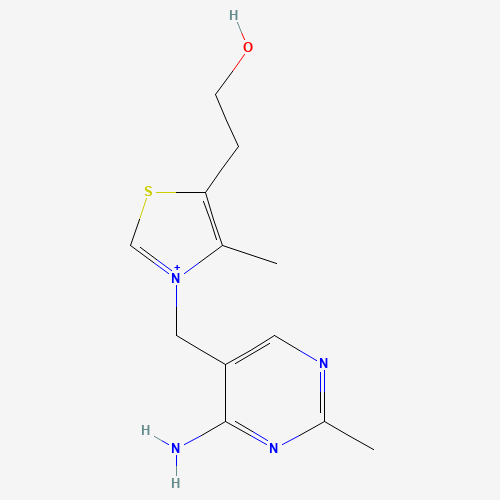| Pharmaceutical Information |
| Drug Name |
Thiamine |
| Drug ID |
BADD_D02197 |
| Description |
Thiamine or thiamin, also known as vitamin B1, is a colorless compound with the chemical formula C12H17N4OS. It is soluble in water and insoluble in alcohol. Thiamine decomposes if heated. Thiamine was first discovered by Umetaro Suzuki in Japan when researching how rice bran cured patients of Beriberi. Thiamine plays a key role in intracellular glucose metabolism and it is thought that thiamine inhibits the effect of glucose and insulin on arterial smooth muscle cell proliferation. Thiamine plays an important role in helping the body convert carbohydrates and fat into energy. It is essential for normal growth and development and helps to maintain proper functioning of the heart and the nervous and digestive systems. Thiamine cannot be stored in the body; however, once absorbed, the vitamin is concentrated in muscle tissue. |
| Indications and Usage |
For the treatment of thiamine and niacin deficiency states, Korsakov's alcoholic psychosis, Wernicke-Korsakov syndrome, delirium, and peripheral neuritis. |
| Marketing Status |
approved; investigational; nutraceutical; vet_approved |
| ATC Code |
Not Available |
| DrugBank ID |
DB00152
|
| KEGG ID |
D08580
|
| MeSH ID |
D013831
|
| PubChem ID |
1130
|
| TTD Drug ID |
D06PQT
|
| NDC Product Code |
Not Available |
| UNII |
X66NSO3N35
|
| Synonyms |
Thiamine | Thiamin | Vitamin B1 | Aneurin | Vitamin B 1 | Thiamine Mononitrate | Mononitrate, Thiamine |
|
| Chemical Information |
| Molecular Formula |
C12H17N4OS+ |
| CAS Registry Number |
70-16-6 |
| SMILES |
CC1=C(SC=[N+]1CC2=CN=C(N=C2N)C)CCO |
| Chemical Structure |

|
|
| ADRs Induced by Drug |
|
|
*The priority for ADR severity classification is based on FAERS assessment, followed by the most severe level in CTCAE rating. If neither is available, it will be displayed as 'Not available'.
**The 'Not Available' level is hidden by default and can be restored by clicking on the legend twice.
|
|
|

